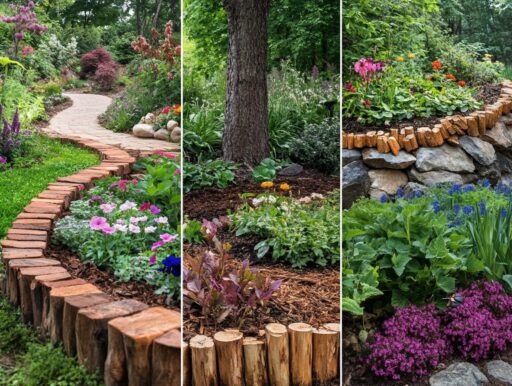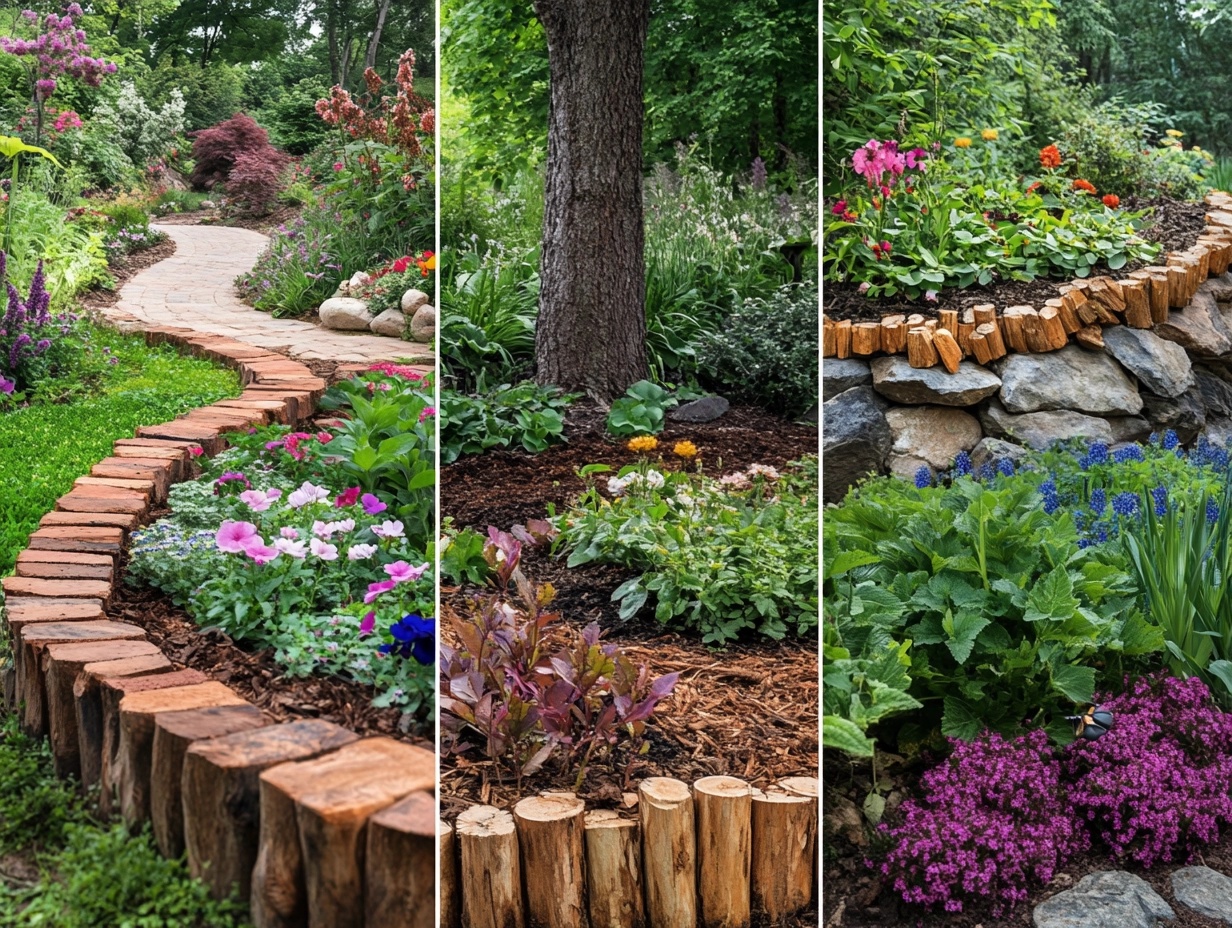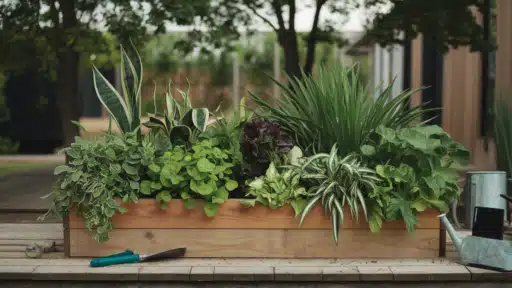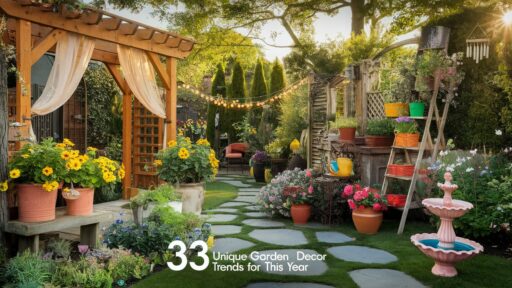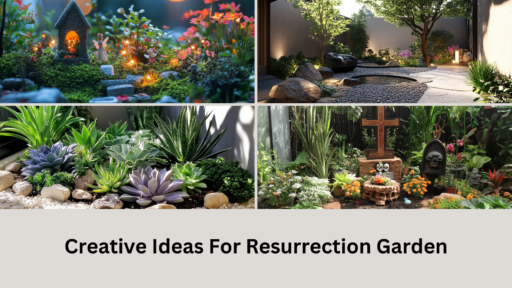Garden edging is the perfect way to add structure and personality to your outdoor space. It defines your flower beds, keeps pathways neat, and gives your garden a polished, cohesive look.
Over the years, I’ve experimented with various DIY edging styles, and what I love most is how easy and budget-friendly these projects can be.
Whether you want a classic brick edge, a rustic log border, or a creative upcycled design, there’s something here to suit every style and skill level.
Let me share some of my favorite DIY garden edging ideas to inspire your next weekend project.
30 Genius DIY Garden Edging Ideas
1. Brick Border
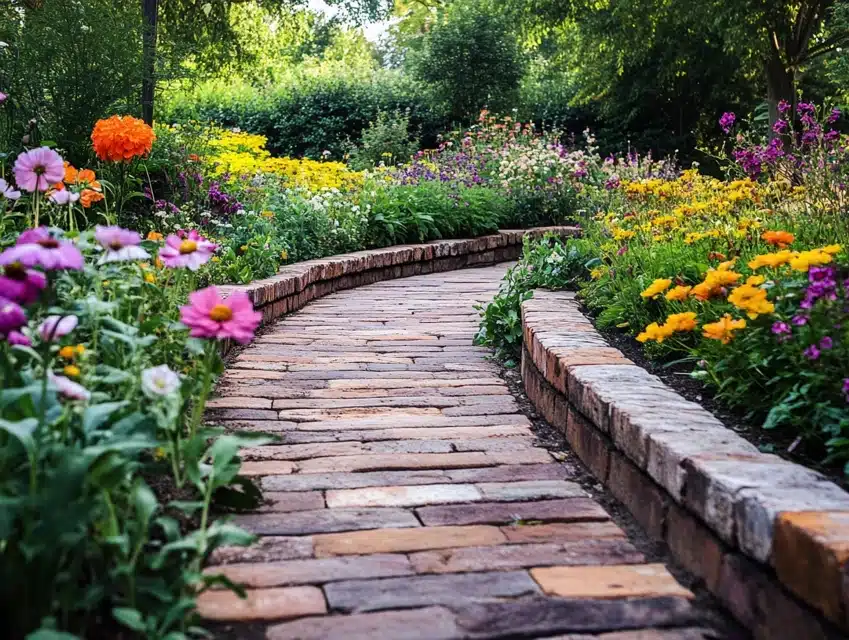
A timeless, durable classic.
Materials: New or reclaimed bricks
Estimated Cost: Low–Moderate
Pros: Weather-resistant, classic look
Cons: May require digging tools
Lay bricks horizontally for subtle borders or vertically for a stronger edge.
Secure with soil or sand in a shallow trench.
2. Wooden Log Edging
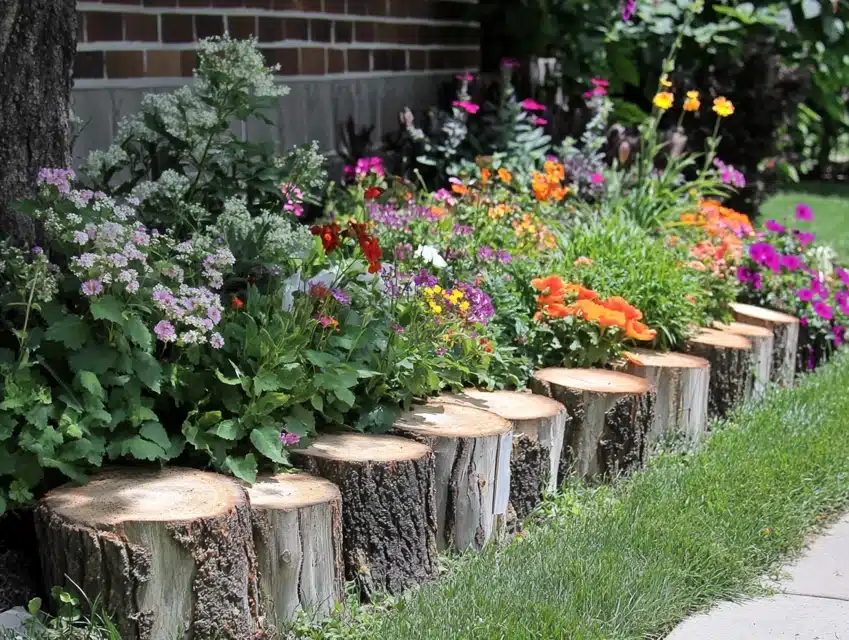
Rustic charm with natural appeal.
Materials: Logs or thick branches
Estimated Cost: Low (if sourced free)
Pros: Blends well with plants
Cons: Less durable untreated
Stand logs upright or lay them horizontally.
Treat wood for weather protection.
3. Recycled Bottle Edge
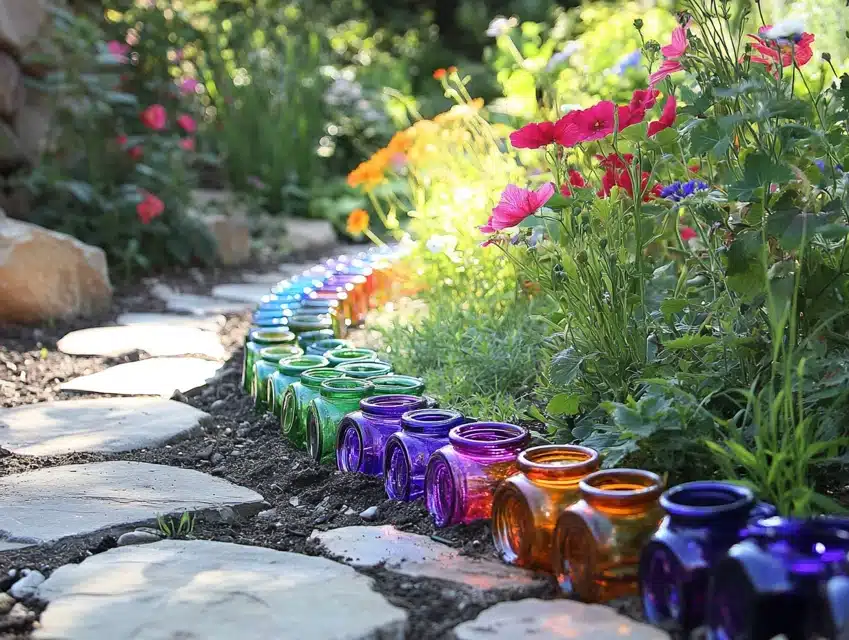
Eco-friendly with creative flair.
Materials: Glass or plastic bottles
Estimated Cost: Free–Low
Pros: Colorful and unique
Cons: Can be fragile
Bury bottles neck-down in a tight row for artistic edging.
Mix bottle colors for visual interest or use clear ones for uniformity.
4. Concrete Pavers
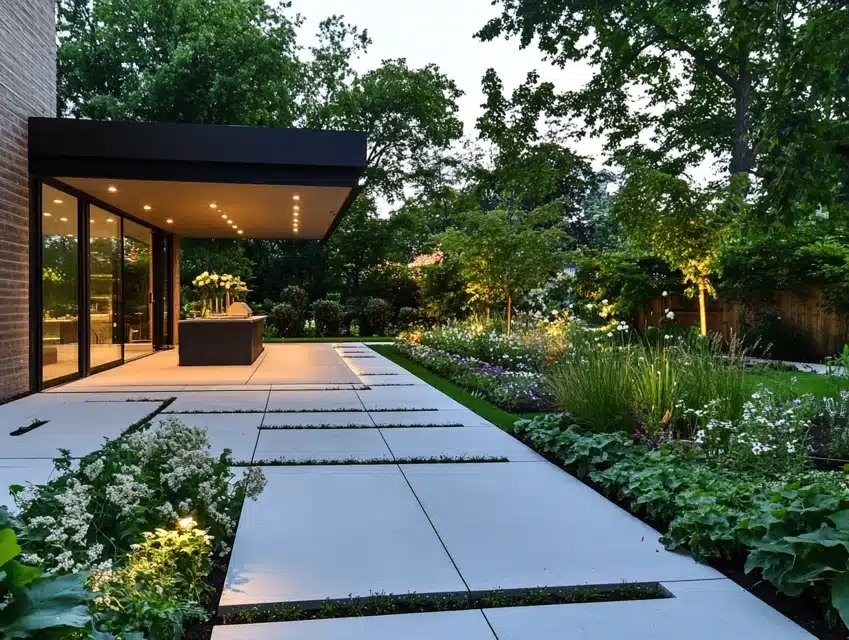
Clean and contemporary.
Materials: Precast concrete pavers
Estimated Cost: Moderate
Pros: Sleek, low-maintenance
Cons: Heavier to install
Install flush with the ground for a seamless path border.
Use sand or gravel underneath for drainage and support.
5. Stone Wall Edge
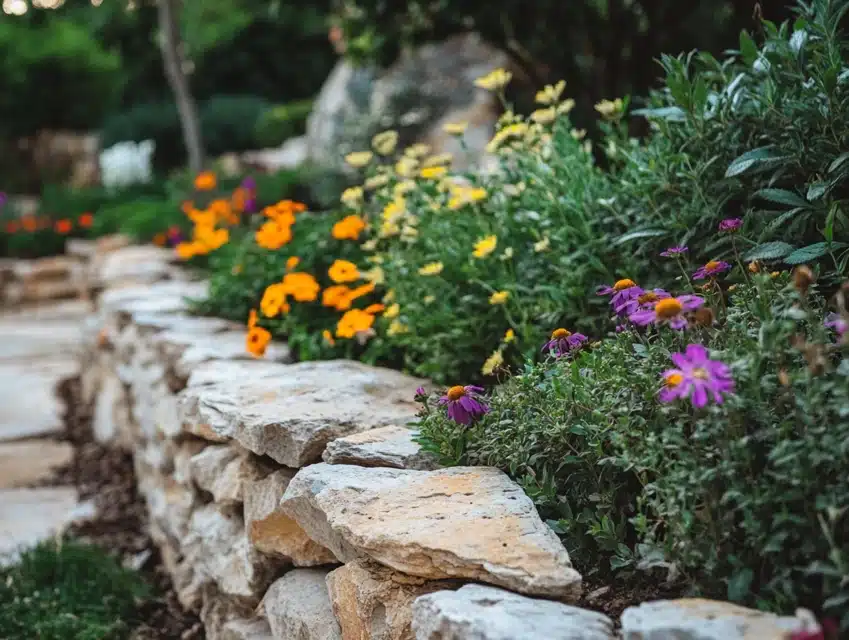
Classic and sturdy.
Materials: Natural or cut stones
Estimated Cost: Moderate–High
Pros: Durable, organic look
Cons: Can be labor-intensive
Stack stones dry for a natural feel or use mortar for permanence.
Blend stone sizes for visual texture and stability.
6. Terracotta Pot Border
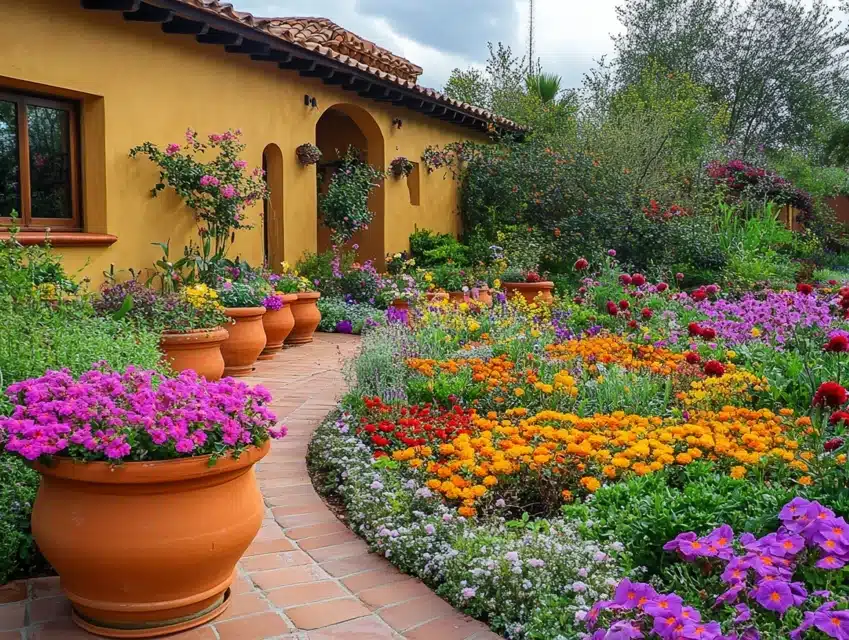
Warm and artistic.
Materials: Small terracotta pots
Estimated Cost: Low–Moderate
Pros: Visually unique
Cons: Breakable
Bury pots halfway at an angle for a dynamic border.
Alternate sizes for a playful and rustic Mediterranean vibe.
7. Metal Edging
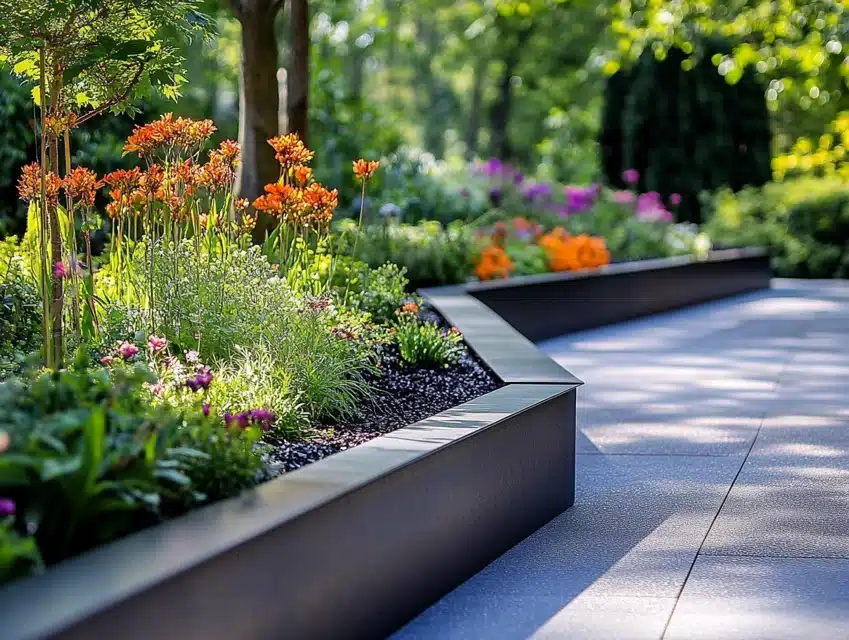
Sleek, minimalist choice.
Materials: Steel or aluminum strips
Estimated Cost: Moderate
Pros: Modern look, long-lasting
Cons: Requires gloves/tools
Insert strips into a narrow trench and hammer stakes to anchor.
Works well for creating sharp curves or straight, clean lines.
8. Upcycled Pallet Wood
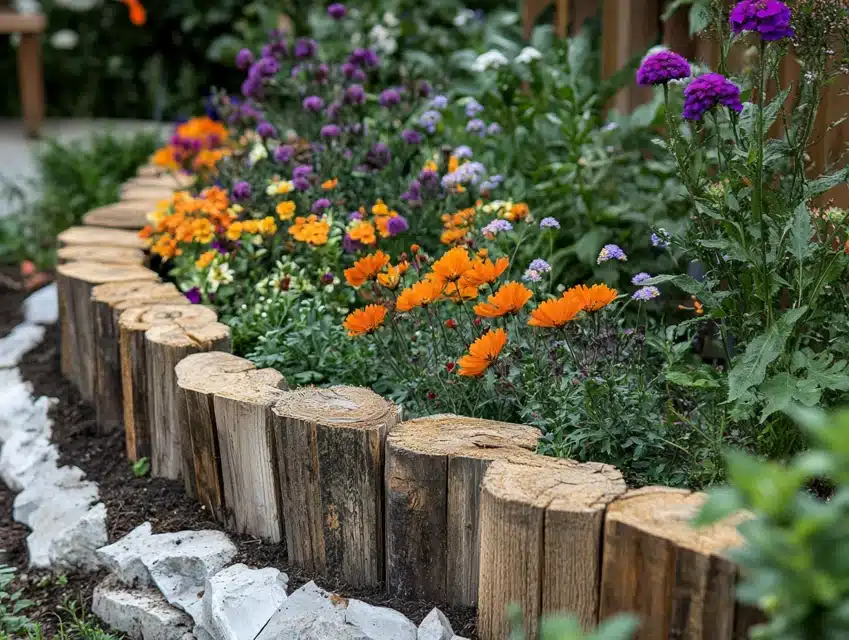
Rustic and sustainable.
Materials: Disassembled wood pallets
Estimated Cost: Free–Low
Pros: Customizable, eco-friendly
Cons: Needs cutting and treatment
Cut planks into desired height and install vertically like pickets.
Seal or paint for added durability and decorative effect.
9. Flower Bed Logs
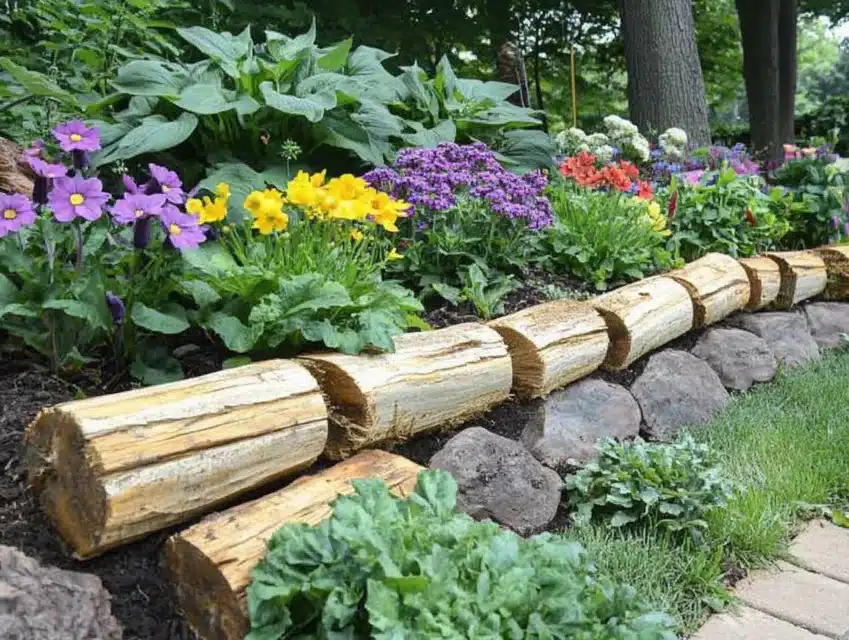
Soft and inviting.
Materials: Short logs or timber
Estimated Cost: Free–Low
Pros: Natural look
Cons: May rot untreated
Line up horizontally along garden beds for an organic boundary.
Secure with stakes or partially bury to prevent movement.
10. River Rock Edging
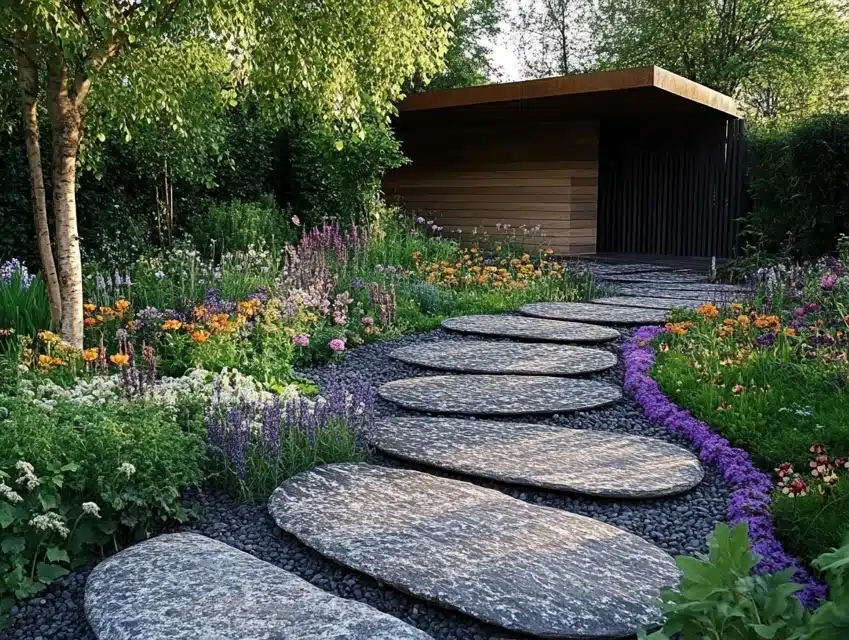
Smooth, elegant lines.
Materials: River rocks or cobbles
Estimated Cost: Low–Moderate
Pros: Durable, weed-resistant
Cons: Can shift over time
Use landscape fabric beneath to reduce weed growth.
Create single or multiple layers for added depth and style.
11. Cinder Block Edge
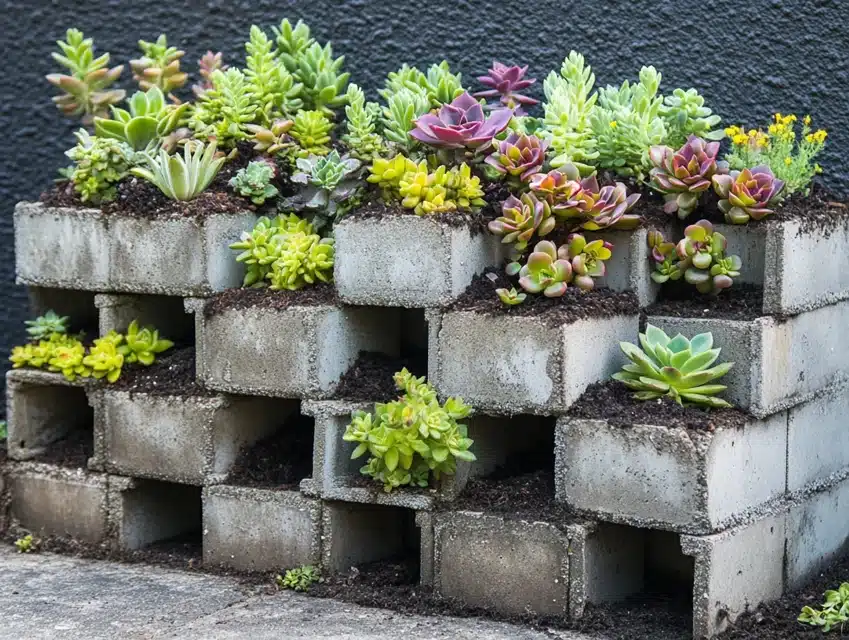
Bold and multifunctional.
Materials: Standard concrete cinder blocks
Estimated Cost: Low–Moderate
Pros: Can double as mini planters
Cons: Heavy to move and position
Fill block holes with soil and plant herbs or succulents.
Leave plain for industrial charm or paint for a colorful twist.
12. Recycled Tire Edging
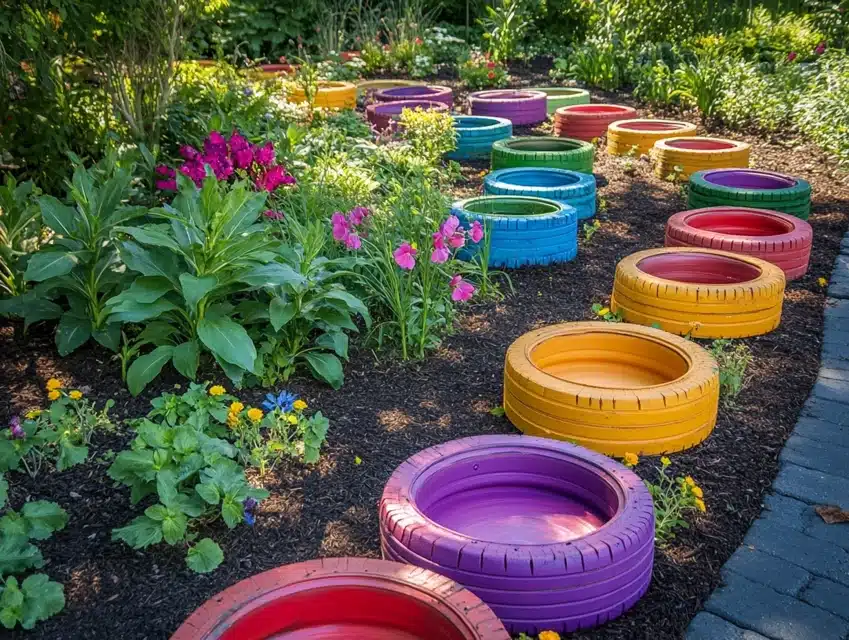
Creative and eco-conscious.
Materials: Old car or bike tires
Estimated Cost: Free–Low
Pros: Weatherproof, fun for kids’ areas
Cons: Bulky and hard to cut
Use whole, halved, or sliced tires; paint them for flair.
Ideal for playful gardens or repurposing old materials.
13. Slate Tile Border
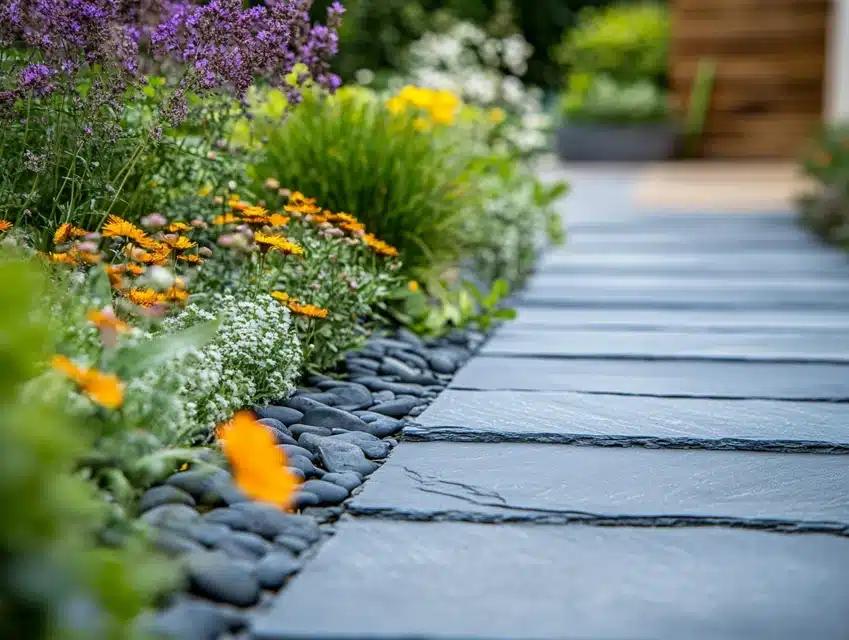
Sleek and sophisticated.
Materials: Natural slate tiles
Estimated Cost: Moderate–High
Pros: Clean, modern aesthetic
Cons: Edges can be sharp
Lay flat for subtle edging or stand upright for drama.
Combine with gravel for a contemporary feel.
14. Seashell Edging
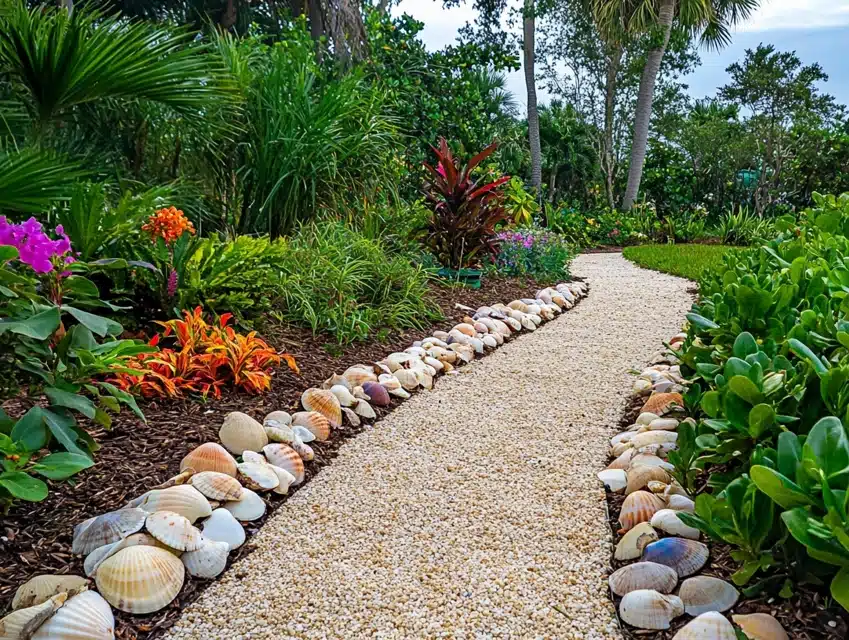
Coastal and whimsical.
Materials: Large or small seashells
Estimated Cost: Free–Low
Pros: Unique texture and color
Cons: Can break under pressure
Bury partially for stability and blend with sand or gravel.
Perfect for seaside or beach-inspired gardens.
15. Woven Willow Fence
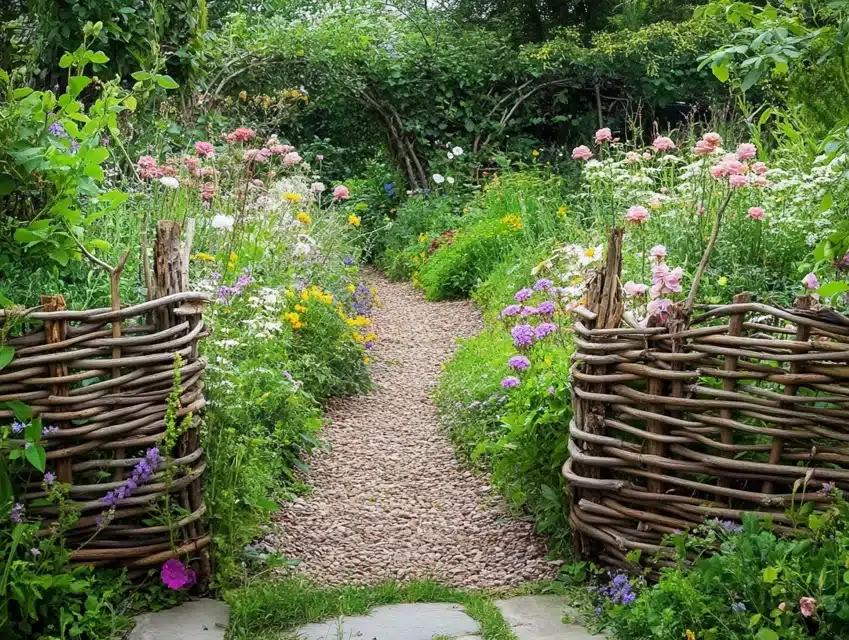
Charming and handmade.
Materials: Willow twigs and wood stakes
Estimated Cost: Free–Low
Pros: Natural, flexible, and rustic
Cons: Less durable without treatment
Weave willow through upright stakes for a cottage look.
Best suited for soft, informal borders.
16. Colored Pebble Edge
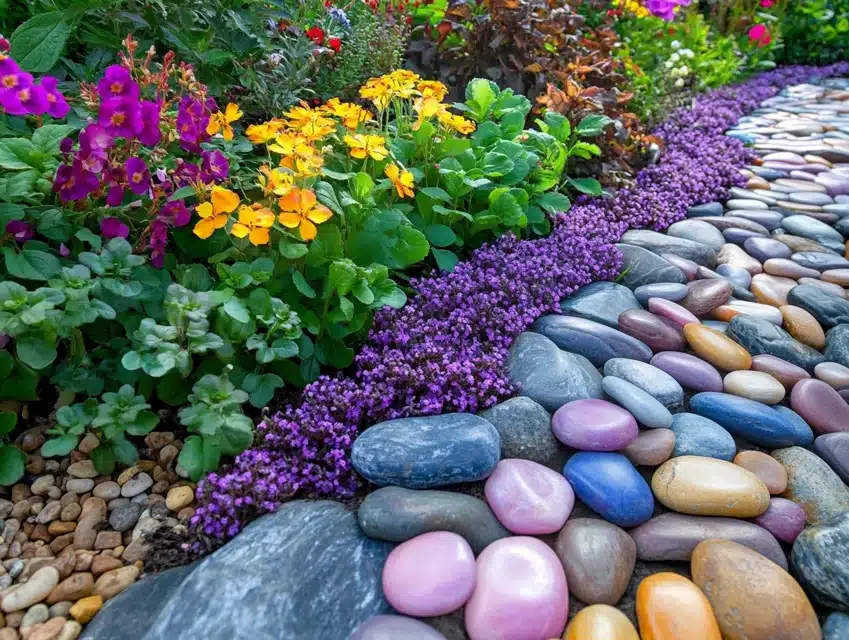
Bright and textured.
Materials: Dyed or natural pebbles
Estimated Cost: Low–Moderate
Pros: Eye-catching and low-maintenance
Cons: Needs landscape fabric to prevent weeds
Layer over fabric to keep tidy and clean.
Great for curves or outlining paths.
17. Corrugated Metal Edging
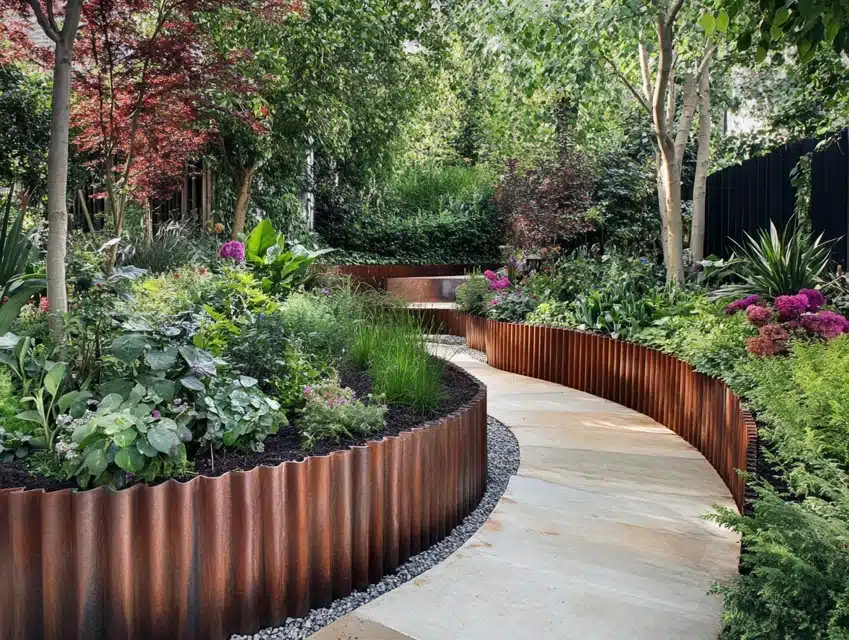
Modern and industrial.
Materials: Corrugated steel or aluminum
Estimated Cost: Moderate
Pros: Durable and sleek
Cons: Sharp edges if not handled properly
Bury part of the panel and secure with stakes.
Ideal for raised beds or sharp visual lines.
18. Brick and Gravel Combo
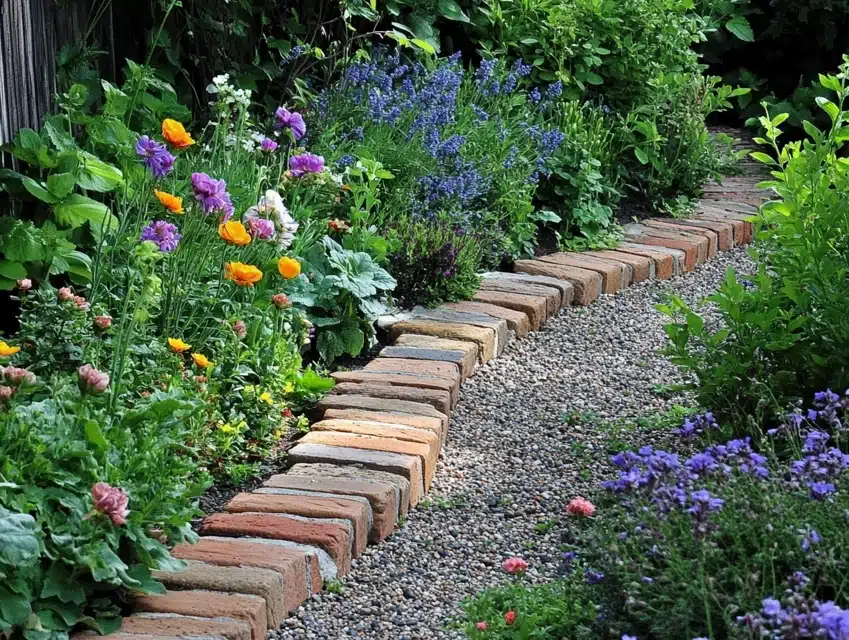
Textured and layered.
Materials: Bricks + pea gravel
Estimated Cost: Moderate
Pros: Great drainage and structure
Cons: Gravel may spread without barriers
Lay bricks in your desired shape, then fill gaps with gravel.
Works beautifully along patios or wide beds.
19. Wooden Plank Edge
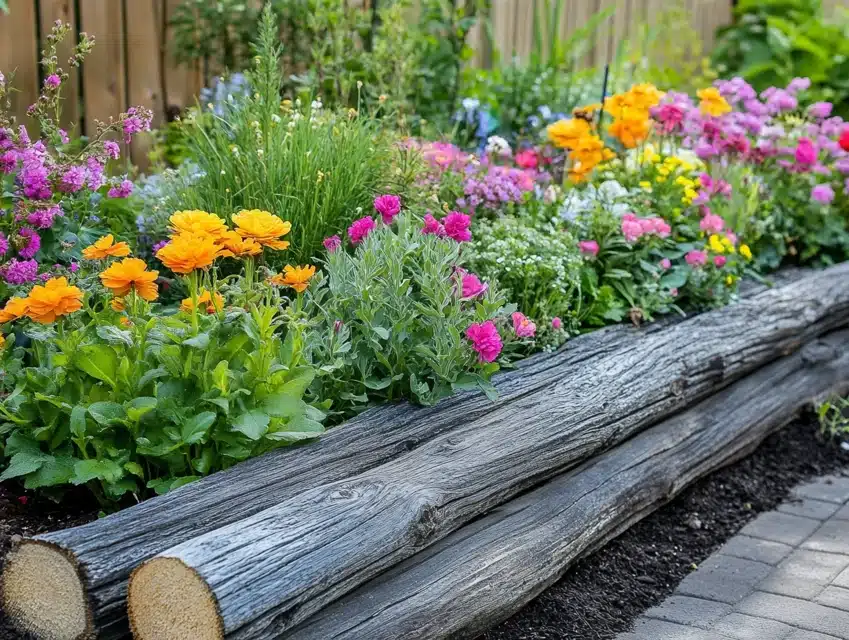
Simple and versatile.
Materials: Cut wood planks
Estimated Cost: Low
Pros: Easy to install and paint
Cons: Can warp without sealing
Stand planks vertically or lay flat for subtle definition.
Treat or stain wood for a polished, weatherproof look.
20. Vertical Slate Stones
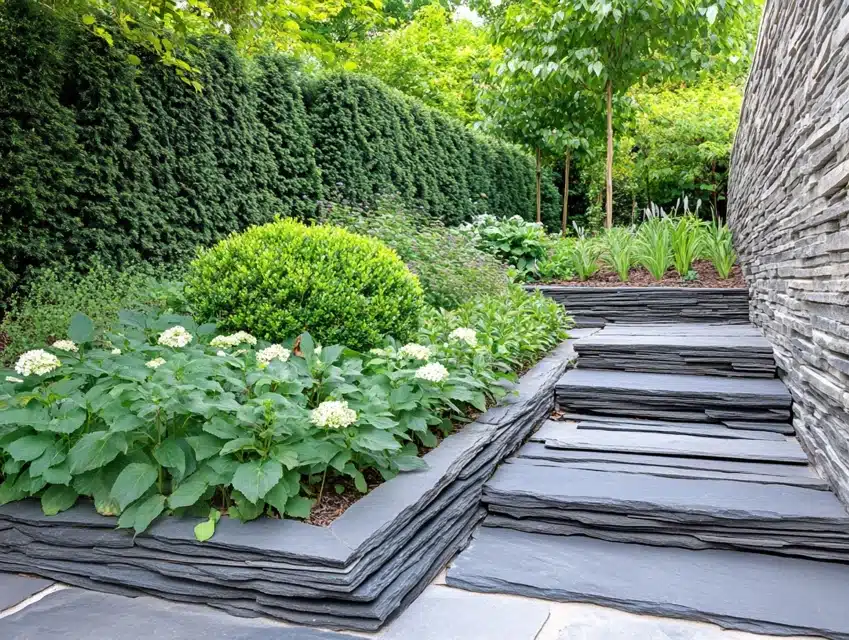
Bold and architectural.
Materials: Upright-cut slate stones
Estimated Cost: Moderate–High
Pros: Striking height and texture
Cons: Needs firm soil base
Dig a narrow trench and place stones vertically.
Works best in sleek, modern gardens.
21. Herb Planter Edge
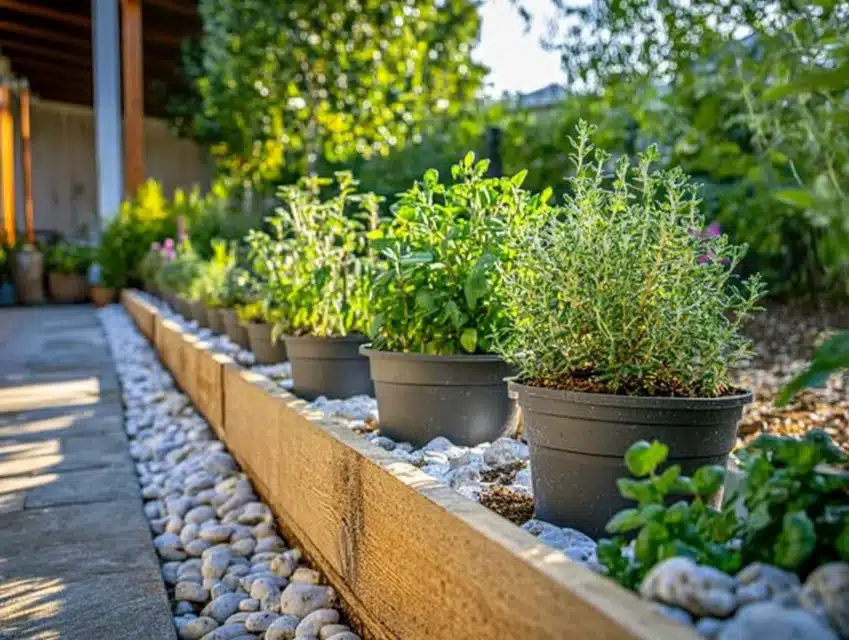
Functional and fragrant.
Materials: Small pots or trough planters
Estimated Cost: Low–Moderate
Pros: Adds greenery and aroma
Cons: Requires regular watering
Line herbs like rosemary or thyme along beds or paths.
Combine beauty with usefulness in small spaces.
22. Recycled Tin Can Edge
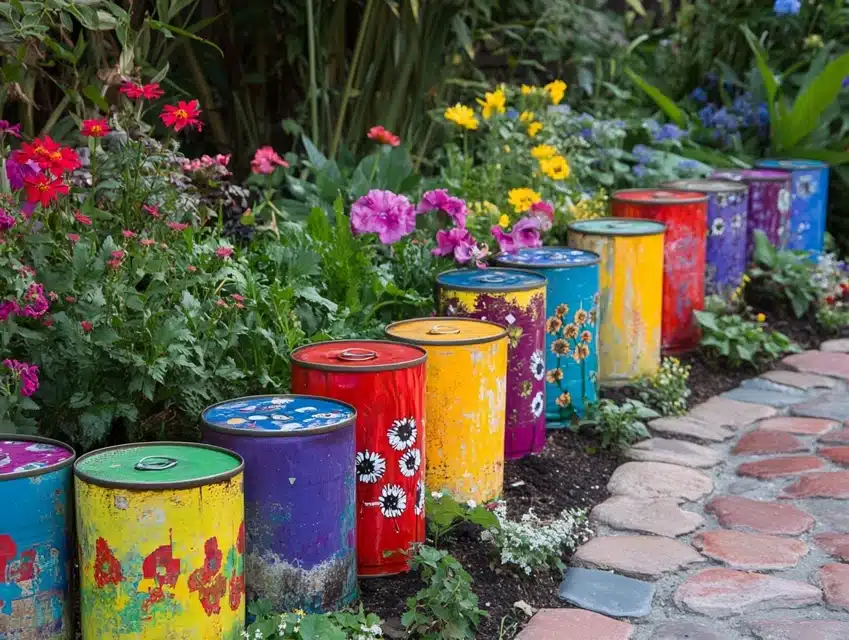
Quirky and colorful.
Materials: Clean tin cans
Estimated Cost: Free
Pros: Fun and family-friendly
Cons: Rusts over time without sealing
Paint and decorate, then bury halfway in soil.
Great for creative or upcycled garden themes.
23. PVC Pipe Edging
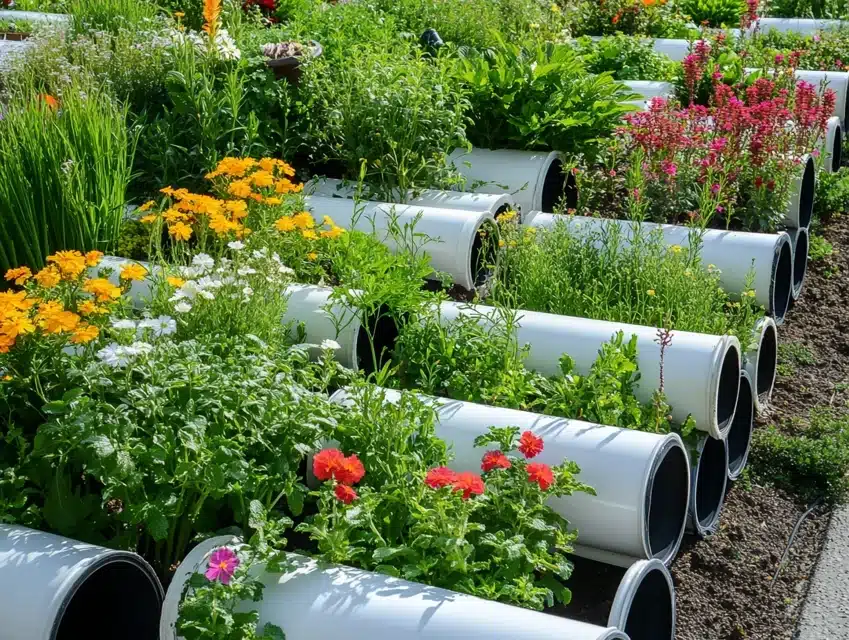
Uniform and easy.
Materials: Cut PVC piping
Estimated Cost: Low
Pros: Lightweight and weatherproof
Cons: Can look too artificial if unpainted
Cut to even or varied heights, bury halfway.
Paint for a more natural or playful look.
24. Rope and Wooden Stake Edge
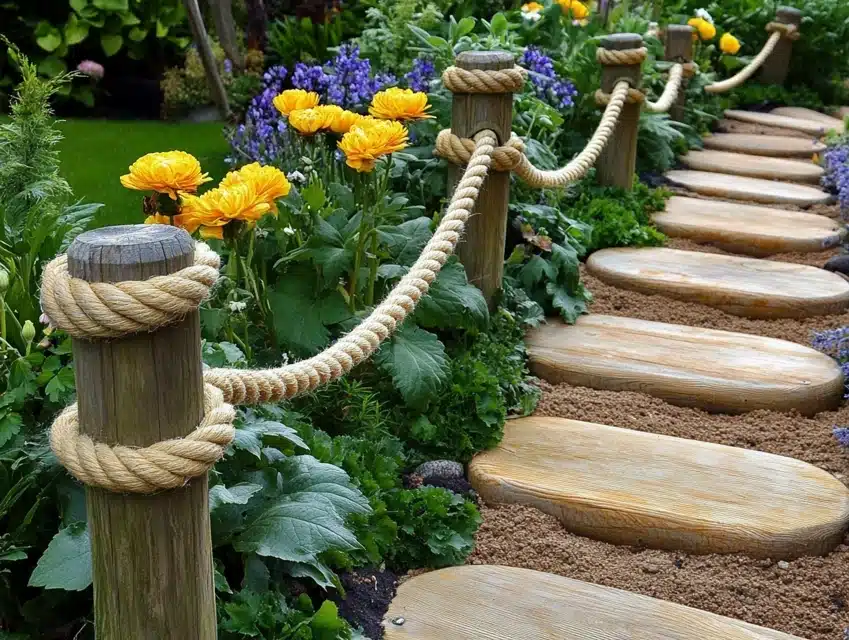
Nautical and soft.
Materials: Thick rope + stakes
Estimated Cost: Low–Moderate
Pros: Gentle barrier, decorative
Cons: Not highly durable
Drive wooden posts and loop rope tightly.
Adds movement and flow to relaxed garden paths.
25. Layered Brick Edge
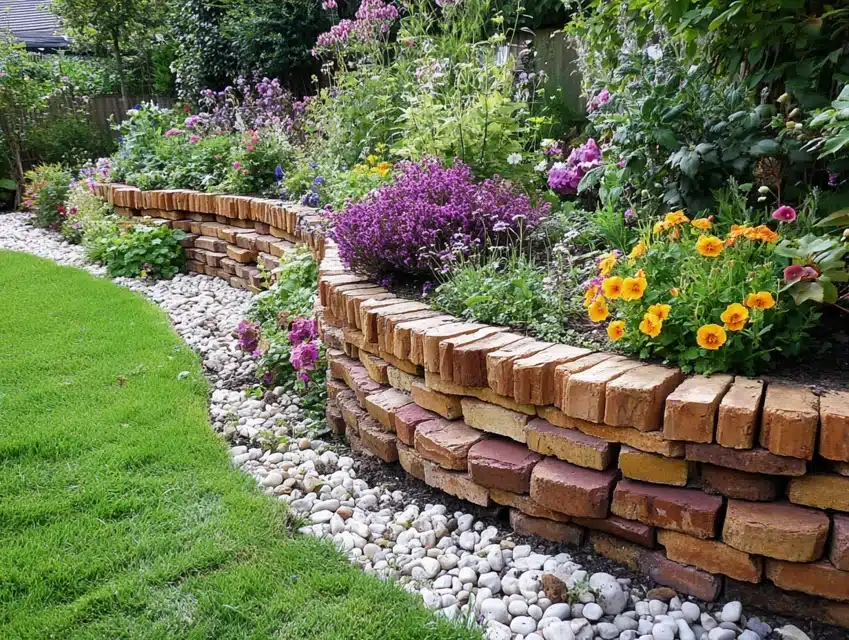
Sturdy and structured.
Materials: Standard bricks
Estimated Cost: Moderate
Pros: Long-lasting, formal style
Cons: Time-intensive to stack evenly
Build up 2–3 brick layers with overlap or mortar.
Prevents soil erosion and adds height.
26. Painted Rock Edge
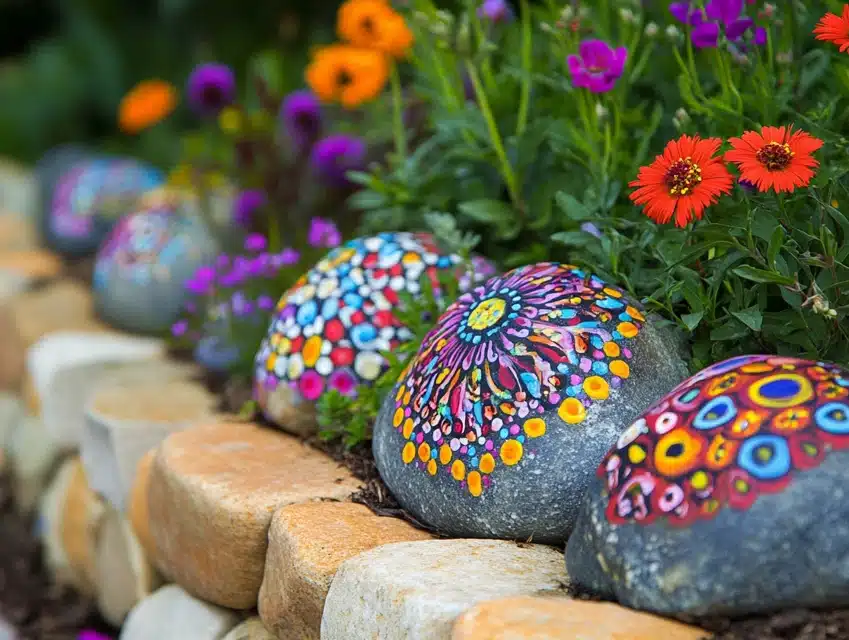
Playful and personalized.
Materials: Smooth landscaping rocks
Estimated Cost: Free–Low
Pros: Fully customizable
Cons: Paint may fade outdoors
Use weatherproof paint; add patterns or messages.
Fun DIY project for families or kids.
27. Bamboo Edging
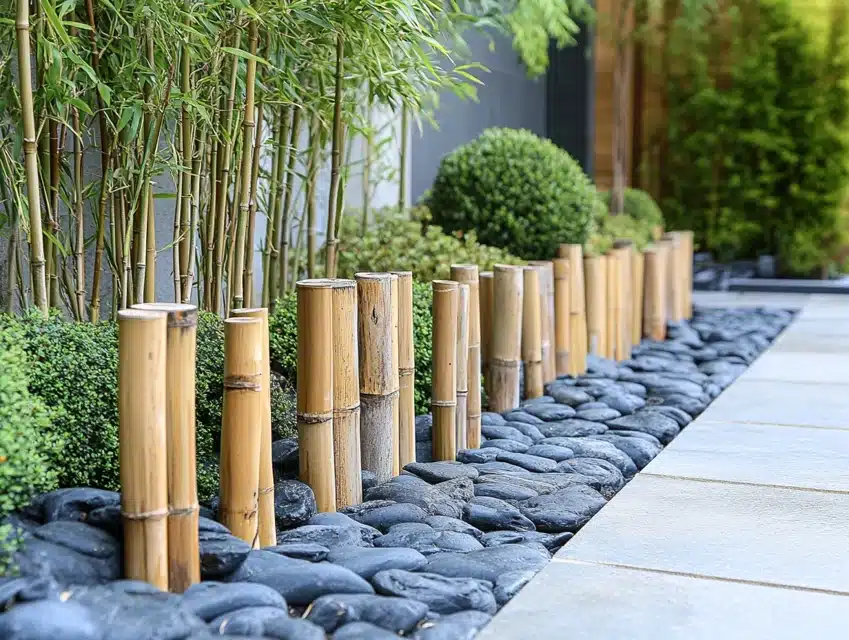
Natural and refined.
Materials: Bamboo stalks or rolls
Estimated Cost: Low–Moderate
Pros: Eco-friendly and decorative
Cons: May degrade if untreated
Install vertically or horizontally in compact soil.
Great for Zen or tropical-style gardens.
28. Concrete Mold Edging
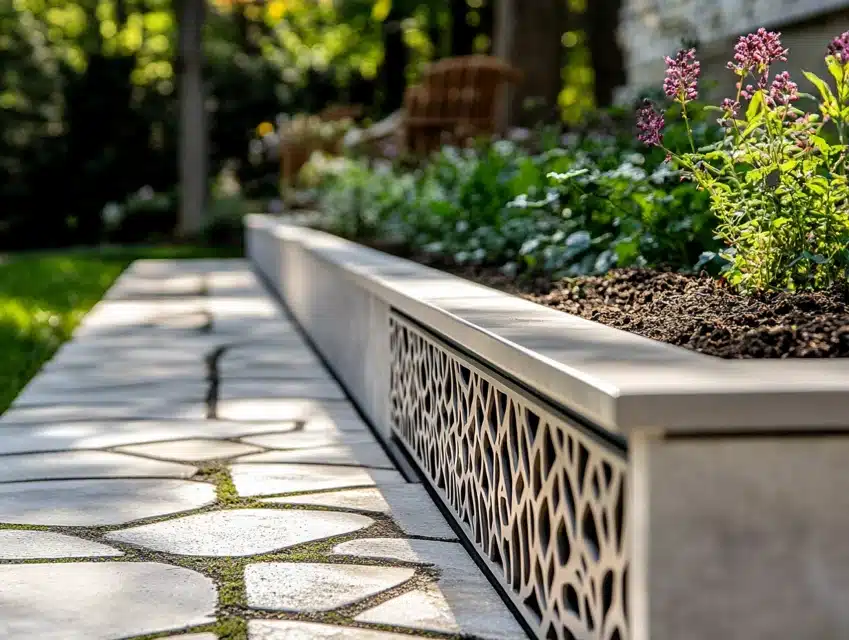
Custom and long-lasting.
Materials: Concrete + molds
Estimated Cost: Moderate–High
Pros: Tailored design and color
Cons: Requires curing time
Pour concrete into reusable molds along garden beds.
Adds a polished look with personal flair.
29. Tile Mosaic Border
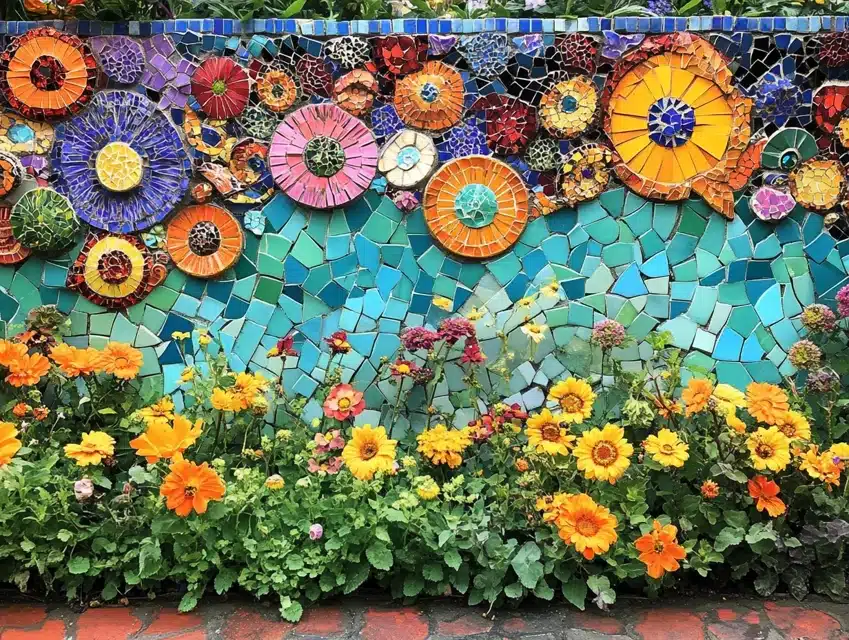
Colorful and artistic.
Materials: Broken or leftover tiles
Estimated Cost: Free–Moderate
Pros: Vibrant and unique
Cons: Time-consuming placement
Arrange tiles in patterns, then set with mortar.
Seal the surface for longevity and weather resistance.
30. Driftwood Edge
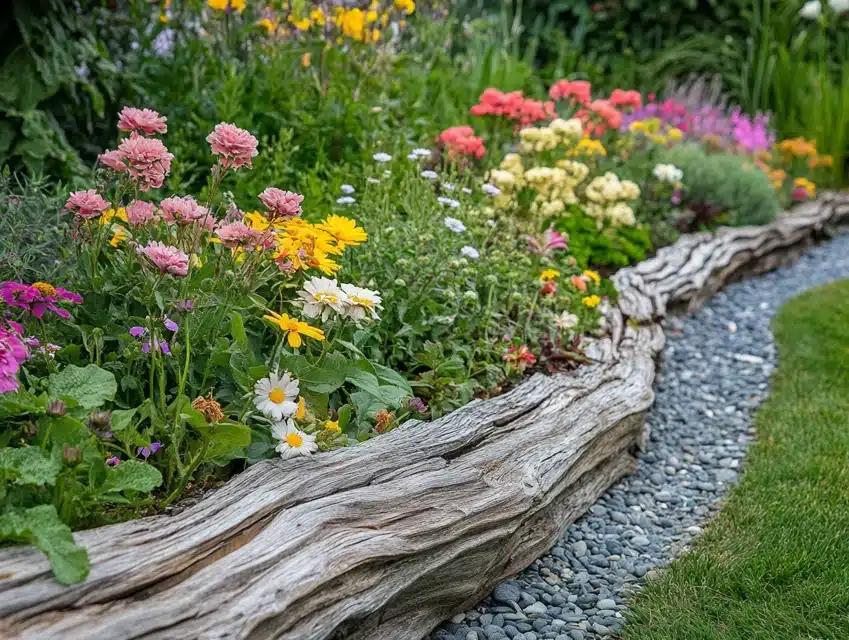
Weathered and organic.
Materials: Driftwood pieces
Estimated Cost: Free (if found)
Pros: Textured, beachy vibe
Cons: May need anchoring in soft soil
Bury slightly or stake down driftwood for support.
Ideal for rustic, coastal, or boho garden themes.
Conclusion
Creating garden edging doesn’t have to be expensive or complicated. From classic brick borders to creative upcycled designs, there’s an option for every budget, style, and skill level.
What I love most about DIY edging projects is how they allow you to personalize your garden while keeping things functional and organized.
Whether you’re drawn to rustic wooden logs, sleek concrete molds, or playfully painted rocks, the right edging can completely transform the look and feel of your outdoor space.
And the best part? Many of these ideas are easy to install, even for beginners.
So, roll up your sleeves, pick a design that speaks to you, and start crafting a garden edge that makes your space unique.
With a little creativity and effort, you’ll have a polished garden that’s both beautiful and practical.
Which edging idea are you excited to try? Tell us below in the comments!
Frequently Asked Questions
What Is the Cheapest Way to Edge Your Garden?
Use free materials like rocks, bricks, logs, or recycled bottles. Mulch or soil mounds also create a natural, no-cost edge.
What Materials Can I Use for Garden Edging?
Use bricks, stones, wood, metal, concrete, bamboo, or recycled items like bottles, tires, and pallets—each suiting different styles and budgets.
How Do You Make a Simple Garden Border?
Dig a shallow trench, place bricks or stones along the line, and secure with soil for a clean, quick, and easy border.
How Do You Install Garden Edging Yourself?
Mark the edge, dig a trench, insert your edging material, backfill with soil or stakes, and tamp firmly to secure.
What Are Eco-Friendly Garden Edging Options?
Opt for recycled bottles, pallets, tin cans, or natural driftwood, bamboo, and stones. Living plant edges, like herbs, are green and beautiful.

